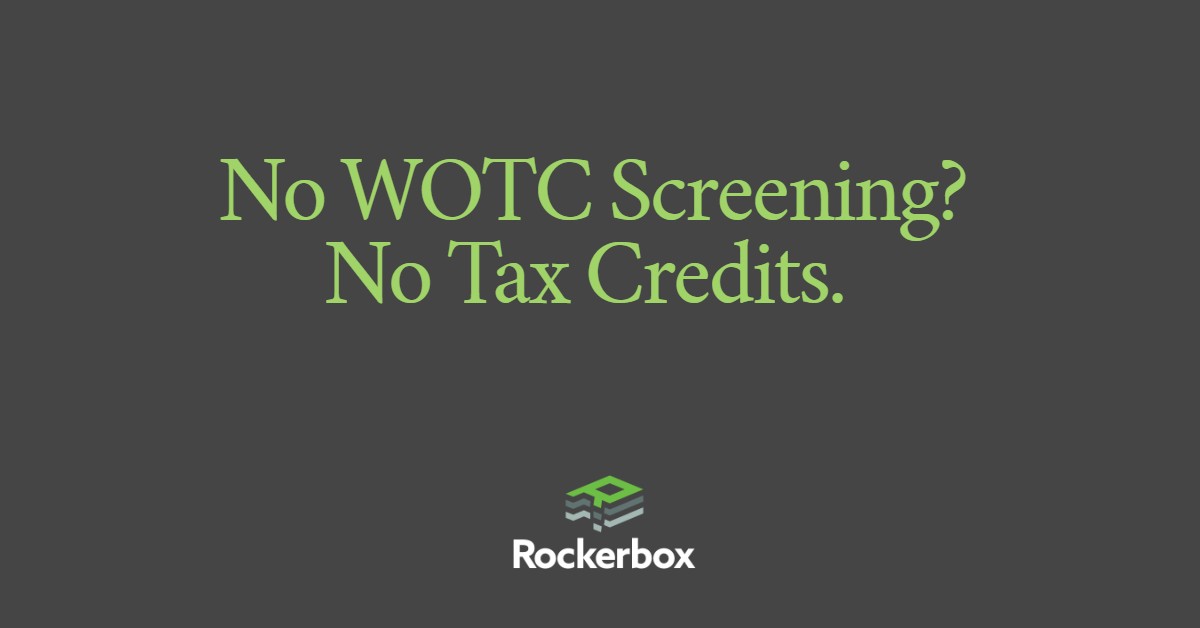
Why Managing a Healthy WOTC Screening Percentage Is the Key to Unlocking Real Tax Credit Value
When it comes to the Work Opportunity Tax Credit (WOTC), there’s one metric that can make or break your results:
Screening percentage.
You can have the best payroll system, the smoothest onboarding, and the most sophisticated WOTC provider — but if you’re not screening your applicants and new hires consistently, you’re leaving tens (or hundreds) of thousands of dollars on the table.
What Is a “Healthy” WOTC Screening Percentage?
In the world of WOTC optimization, a healthy screening percentage is generally considered to be 85% or higher.
That means that at least 85% of all eligible applicants or new hires are completing the WOTC questionnaire (IRS Form 8850 and ETA Form 9061) within 28 days of their start date.
Why does this matter?
Because no screening = no certification = no tax credit.
It’s that simple.
The Financial Upside of Better Screening
Each WOTC-eligible employee can earn your company $2,400–$9,600 in tax credits. If your organization hires hundreds or thousands of employees per year, even small improvements in your screening rate can have a massive impact.
Let’s look at a simple example:
| Annual Hires | Screening % | Eligibility Rate | Avg. Credit | Annual Credits Captured |
|---|---|---|---|---|
| 1,000 | 50% | 20% | $2,500 | $250,000 |
| 1,000 | 85% | 20% | $2,500 | $425,000 |
That’s a $175,000 difference — just by increasing the screening percentage.
Why Screening Percentage Falls Short — And How to Fix It
Most organizations don’t fail at WOTC because they lack good intentions — they fail because they don’t manage WOTC screening like a performance metric.
Here are the common reasons:
- It’s not embedded into every new hire workflow
- Hiring managers aren’t trained or held accountable
- Screening steps are skipped during peak hiring
- There’s no visibility into who’s being screened (or not)
The solution? Treat WOTC screening like you would any other KPI.
How to Manage and Improve WOTC Screening Performance
Here are five steps every employer should implement:
1. Automate the Screening Process
Trigger the WOTC questionnaire as soon as a job offer is sent, a candidate applies, or a background check clears. Integrate this into your ATS or onboarding system.
2. Educate Hiring Managers
Make it clear: screening is now part of their job. Include it in training, performance reviews, and even onboarding checklists.
3. Track by Location, Team, and Role
Use dashboards or reports to show screening rates by department, office, or recruiter. Transparency drives accountability.
4. Coach Low Performers
Provide targeted support to offices or teams with low screening rates (under 85%). Many simply need better tools or guidance.
5. Recognize High Performers
Celebrate teams that hit 90%+ — with shoutouts, leaderboards, or fun incentives. Make WOTC a team win.
Beyond the Credit: WOTC as a DEI & Operational Strategy
Don’t forget — WOTC isn’t just about tax credits. It’s about giving individuals from disadvantaged backgrounds a second chance and building a more inclusive workforce.
By managing WOTC screening performance, you’re not only improving cash flow — you’re aligning HR, finance, and compliance with your mission and values.
The Bottom Line
If you want to maximize the value of your WOTC program, start with the screening rate.
It’s the lowest-effort, highest-impact lever you have.
Here’s the formula:
Screen more → Certify more → Earn more → Reinvest more.
Make WOTC screening performance a metric that matters — and watch how it transforms your hiring process and your bottom line.
Want help improving your WOTC screening rates? Rockerbox offers automated solutions, real-time reporting, and white-glove support to help you get there. Visit www.rockerbox.tech/wotc or schedule a Discovery Call to learn more.